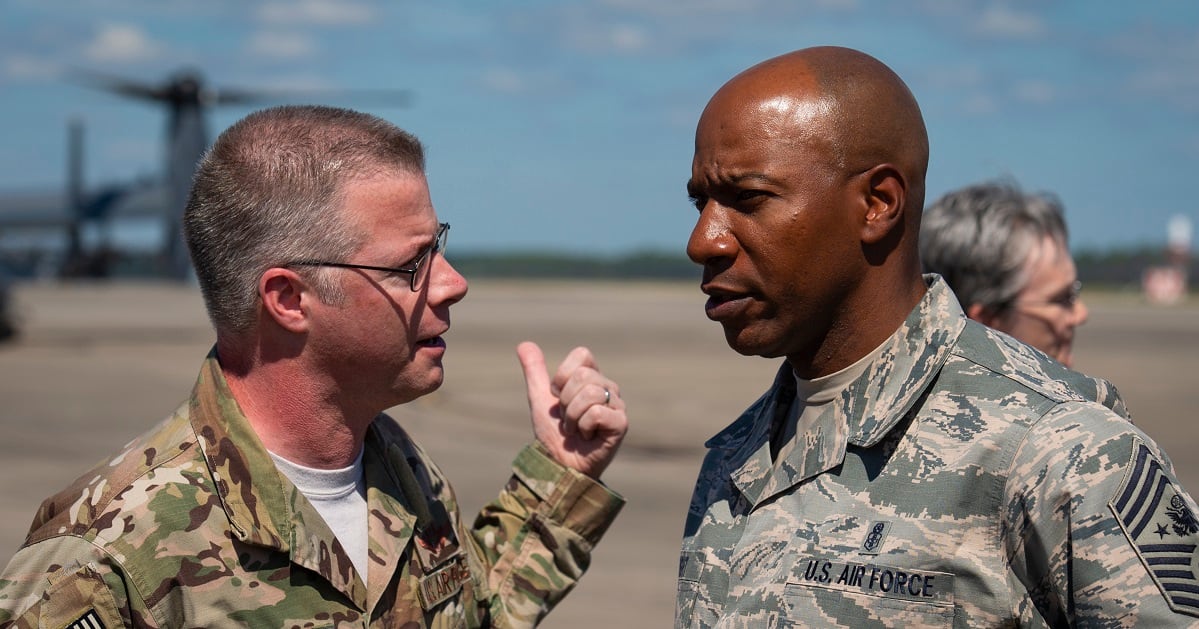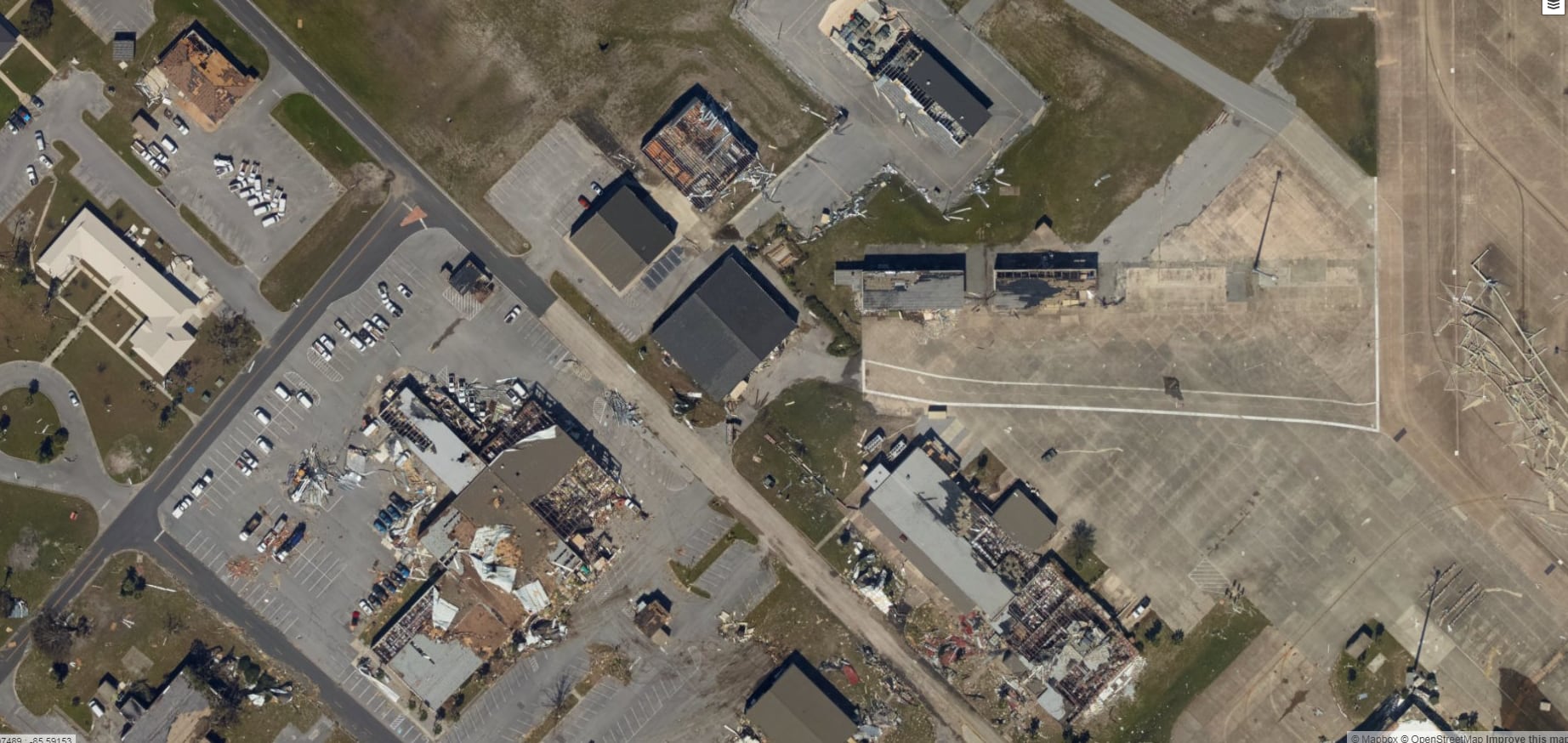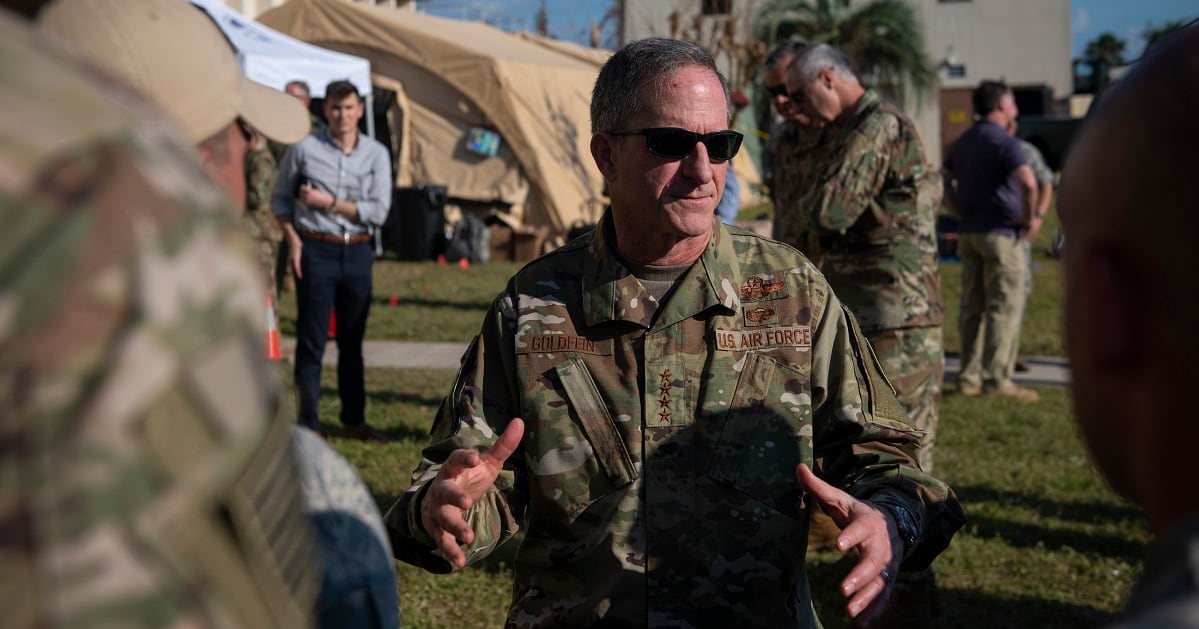After touring Tyndall Air Force Base Sunday, the Air Force’s top leaders said the F-22s that remained behind when Hurricane Michael struck were not as badly damaged as originally feared.
But more inspections of the advanced fighters still need to be done before the Air Force can tell whether some or all can be repaired and returned to the sky, said Air Force Secretary Heather Wilson, Chief of Staff Gen. Dave Goldfein, and Chief Master Sergeant of the Air Force Kaleth Wright in a statement Sunday evening.
It also remains unclear when the 11,000 Tyndall personnel who were ordered to evacuate a week ago will be able to return.
Wilson, Goldfein and Wright visited Tyndall four days after the Category 4 storm tore through the base.
“The team there is doing tremendous work,” they said. “Not one airman or family member was injured during Hurricane Michael. That’s a testament to the base’s leadership and sound judgment in the face of rapidly changing storm predictions.”
The officials said that as they toured the base, the severity of the hurricane’s toll was apparent, “especially around the Tyndall flightline.”

“We also looked into each of the hangars that housed aircraft which weathered the storm for maintenance or safety reasons,” they said. “Visually, they were all intact and looked much better than expected considering the surrounding damage to some structures. Our maintenance professionals will do a detailed assessment of the F-22 Raptors and other aircraft before we can say with certainty that damaged aircraft can be repaired and sent back into the skies. However, damage was less than we feared and preliminary indications are promising.”
But the Air Force has so far refused to answer questions about how many Raptors may have been damaged.
After images surfaced on social media last week showing F-22s and QF-16s in damaged hangars, the Air Force said Friday that some aircraft were left behind due to maintenance or safety reasons, and likely sustained some damage. But the Air Force did not say how many remained at Tyndall.
Other Raptors were moved out of the area before the storm hit. Goldfein said some of Tyndall’s F-22s — which initially evacuated to Wright-Patterson Air Force Base in Ohio — were moved to Joint Base Langley-Eustis in Virginia Sunday, where they could be worked on by maintainers from the 1st Fighter Wing.
RELATED

In a video posted online Saturday, Col. Brian Laidlaw, commander of the 325th Fighter Wing and installation commander at Tyndall, said he’s doing everything he can to allow personnel to return as soon as possible to survey the damage to their homes.
“Today is a better day than yesterday, and things are going to keep getting better,” Laidlaw said in a Facebook post Saturday. “Each day we recover more of Tyndall Air Force Base.”
Also in that video, Gen. Mike Holmes, head of Air Combat Command, urged evacuated airmen to stay where they are and said it’s not safe to return. He encouraged airmen to visit an official Air Force web page for more information on hurricane recovery efforts.
It remains unclear when airmen, civilians and families evacuated from Tyndall will be able to return. Wilson said at the conference that its housing remains unsafe, and people are not being allowed back because the Air Force fears they could get hurt. Wilson said base leadership will tell families when they can return.

In a post Thursday, Tyndall officials said that its first aerial assessment showed that all base houses sustained significant roof and siding damage, and some sustained severe damage. Some dorms at Tyndall fared well, but others sustained severe damage.
In a news conference at Tyndall Sunday, Goldfein said he was hesitant to say what the Air Force’s assessment of the F-22s was after its initial, visual inspection concluded. The Air Force needs to do a more thorough inspection of the fighters — including turning them on and looking more closely at their systems, sub-systems and components — before coming to any conclusions.
“These are very sophisticated aircraft, that have a lot of interfaces,” Goldfein said. “We have a sense of how they look physically, but, until we get into them and really power them up, we’ll have a good sense of what kind of damage is done.”
The flight line is devastated, Tyndall officials said. Many buildings on base are a complete loss, and the rest sustained severe damage. And its drone runway are among the areas that sustained catastrophic damage. Tyndall’s marina is completely destroyed, including its structures and docks.
Wilson said damage to hangars is also hampering efforts to assess aircraft damage.
“We don’t want to go in prematurely and take a look at an aircraft, or try to power it up, and cause a problem because we really didn’t safe the area first,” Wilson said. “We want to make sure we recover in the right way, that protects the safety and security of our airmen and the equipment for which we are responsible.”
Goldfein compared the damage to that done to Shaw Air Force Base in South Carolina by Hurricane Hugo in 1989.
“It will take time to recover, but we’ve been through this before and our airmen are up to the challenge,” they said in the statement. “Tyndall leadership will continue working hard to get information to airmen and families and all those displaced. We will be working detailed plans in the days ahead to tackle and overcome the challenges. We will get through this together.”
Stephen Losey is the air warfare reporter for Defense News. He previously covered leadership and personnel issues at Air Force Times, and the Pentagon, special operations and air warfare at Military.com. He has traveled to the Middle East to cover U.S. Air Force operations.





